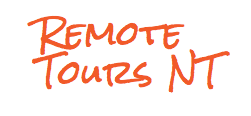
Raising school attendance rates for students in the Watarrka Region is a key goal of the Watarrka Foundation. Many of our projects target this goal by either providing the resources to help children attend school, like our Starlink Project, which enables students at remote outstations to access remote learning through School of Air, or by creating initiatives which help children get excited about attending school, like our upcoming Sports & Storytelling Festival. In light of Indigenous Literacy Day which was on September 6, and the upcoming World Teacher's Day on October 5, let's have a closer look at the Indigenous School Attendance Gap, how it impacts Indigenous Literacy and why this is such an important issue.
The 2020 Closing the Gap report found that over a 5 year period, school attendance rates fell by around 7 percent in the Northern Territory; this was the biggest decline in attendance out of all the states and territories. Nearly 3 in 5 Indigenous children live in very remote areas in the NT, with lower attendance rates directly associated with the degree of remoteness. Something important to note is that for non-Indigenous children, attendance rates did not vary based on remoteness — so this is a significant issue that only effects Indigenous children.
The Indigenous School Attendance Gap is present from the beginning of primary school, but it widens substantially in secondary school. In 2019, only 45% of Indigenous students attained their HSC, compared to 71% for non-Indigenous students. The good news is that the number of Indigenous students who finish Year 12 and get their HSC is rising despite the decline in Indigenous school attendance rates, this means children who do attend school are more likely to stay in school until the end of Year 12 than they were in the past.
A combination of factors contribute to the lower levels of school attendance for Indigenous children. According to this Closing the Gap paper about school attendance and retention rates in Indigenous students by the Australian Government, some notable contributing factors are:
Literacy skills are foundational to education and to life after school. The literacy rate gap between Indigenous students and non-Indigenous students is large and varies greatly depending on school attendance rates and remoteness. According to the Aboriginal Literacy Foundation:
Literacy is necessary for social and human development. It is an essential tool used to eradicate poverty, reduce child mortality, curb population growth, achieve gender equality and ensure sustainable development, peace and democracy.
In 2018, about one in four Indigenous students in Years 5, 7 and 9, and one in five in Year 3, remained below national minimum standards in reading. Despite this, the Indigenous Literacy Gap is progressively closing even though Indigenous School Attendance rates have fallen. This means that we are getting better at teaching literacy skills to the Indigenous children who do attend school.
It is also important to recognise that when we talk about 'literacy' in an educational context it refers to reading and writing. First Nations' cultures have strong lineages of oral histories and many Indigenous people are masters of oral literacy.
Boosting school attendance rates for Indigenous children is a key part of improving the life outcomes of Aboriginal and Torres Strait Islander people and reducing the disparity between Indigenous and non-Indigenous Australians. The Australian Institute of Health and Welfare says that:
Higher levels of educational attainment improve employment opportunities, are associated with higher income and promote participation in all societal activities.
The Watarrka Foundation is working to boost school attendance rates for the children of the remote Watarrka region because not only will it improve these childrens lives and futures, but it will have a positive ripple-out effect into the broader community and in the generations to come.
If you would like to learn more about the Watarrka Foundation's mission, click here: https://watarrkafoundation.org.au/about-us
To learn more about our Starlink project and how it is helping students living on remote outstations access School of Air, click here: https://watarrkafoundation.org.au/Blog/connecting-country-rotary-club-of-moorabbin-funds-internet-for-lilla
To learn more about our upcoming annual Sports & Storytelling Festival and how it encourages primary school aged students from the Watarrka Region to get excited about school and education, click here: https://watarrkafoundation.org.au/Blog/the-2023-upcoming-lilla-sports-storytelling-festival
To support the Foundation and our projects within the Northern Territory, make a donation at www.givenow.com.au/watarrkafoundation






Copyright © 2026 All Rights Reserved | Privacy | Terms & Conditions